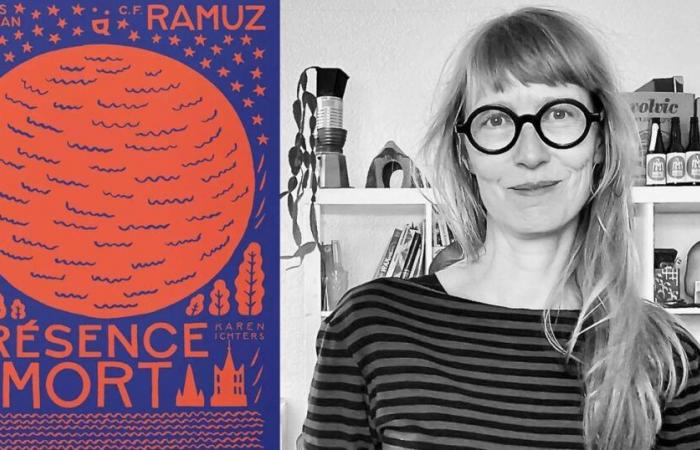Third part of a series of adaptations of CF Ramuz novels to Helvetiq editions, the graphic novel “Presence of death”, designed and designed by Lausannoise Karen Ichters, approaches this work with apocalyptic accents in a game of virtuoso and powerful contrasts.
It all starts with a mystery. Shoulder messages fly over the continents, announcing the inevitable: “by an accident in the gravitation system, quickly the earth falls in the sun and tends to it to rebuild itself.” In 1921, at the end of a scorching summer, see Ramuz extrapolates an end of the world in the shape of a solar fusion. A century later, global warming obliges, difficult not to attribute to “presence of death” of prophetic accents.
In a series of paintings like so many stations on the way to the cross of humanity, the Vaud novelist observes his contemporaries, detailing the way in which each manages with this announced death. A cosmic cataclysm, yes, but described through the prism of a small local community: that of the city of Lausanne and its surroundings.
You should be able to imagine the sky, the stars, the continents, the oceans, the equator, the two poles. However, we imagine nothing but ourselves and what is around you.
Restore the Lausanne d’Antan
This regional anchoring, Karen Ichters makes it one of the forces of his graphic adaptation. To design this third part of the Ramuzian rereadings launched by Helvetiq editions, the Lausanne graphic designer and illustrator consulted many visual archives, in order to restore in their historical condition the places described in the novel. From cabarets to trams, from the lake to the Lake with working -class districts, the graphic novel reconstructs with finesse the atmosphere and the places of the Lausanne of yesteryear.
In a black and white inspired by the engraving, sometimes evoking the famous “intimacies” of Félix Vallotton, Karen Ichters composes each of his pages according to the rhythm and the musicality that suits the subject. The poetic text of Ramuz, kept almost identical, runs between this set of small paintings, where the domestic scenes alternate with the undulations of nature and the abstraction of the great cosmic upheavals.
-Working in monochrome allows you to approach drawing and text almost at the same level. There is no color hierarchy, so we exaggerate other elements to enhance them.
A dissolution in space
From the traditional comic strip, the Lausanne illustrator kept the cutting of the movement by boxes, playing in the manner of a camera large plans and zoom effects. And the box, here, also plays a symbolic role: even at the height of their revolt, all these beings of a miniature corner of the country are the prisoners of this planet which goes to its loss.
Forced to operate cuts in the original, Karen Ichters chooses not to dwell on the end of the story, whose message of Christian salvation contrasts with the visionary modernity of this disaster novel. It remains then, as the end of the world, a dissolution in space, whose blacks and trenched whites make the lights blind and the overwhelming immensity.
Nicholas Julliard/aq
Karen Ichters – Cf Ramuz, “Presence of death”, ed. Helvetiq, May 2025.
Do you like to read? Subscribe to Qwertz And receive this newsletter devoted to the news of the book prepared by RTS Culture every Friday.








